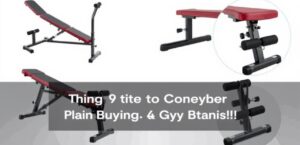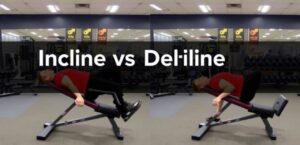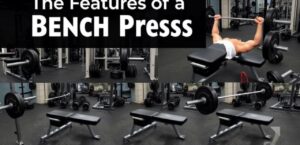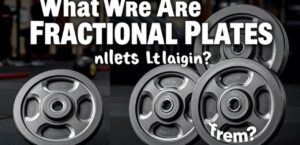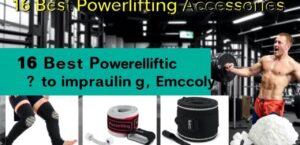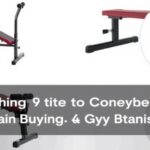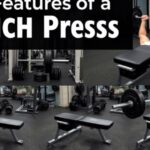When it comes to powerlifting, achieving maximum strength in the squat, deadlift, and bench press is a constant pursuit. While proper technique and strength conditioning are crucial, using the right powerlifting accessories can make a huge difference in training efficiency and performance. These accessories provide support, improve form, and enhance recovery, allowing you to lift heavier and train harder.
In this article, we will discuss the 16 best powerlifting accessories that can help you improve your training and reach your powerlifting goals.
Powerlifting Belt
A powerlifting belt is a staple in the gear of any serious lifter. The belt helps increase intra-abdominal pressure, which stabilizes the core and supports the lower back during heavy lifts. This increased pressure allows you to lift more weight safely, especially in exercises like the squat and deadlift.
Top Tip: Make sure to wear the belt only when lifting near your maximum to avoid becoming reliant on it during every lift.
Lifting Straps
Lifting straps are essential for lifters who struggle with grip strength, especially during the deadlift and other pulling exercises. They allow you to hold onto heavier weights, reducing the chances of your grip giving out before your muscles do.
Top Tip: Use straps when training for maximum strength but rely on grip exercises to build your forearm and hand strength.
Knee Sleeves
Knee sleeves provide support and warmth to the knee joint, helping to reduce the risk of injury and improving blood flow during heavy squats or leg training. They also offer compression, which can enhance recovery post-training.
Top Tip: Choose knee sleeves that offer a good balance of compression and flexibility for maximum comfort and support.
Wrist Wraps
Wrist wraps are designed to stabilize the wrists, reducing the risk of injury during heavy pressing movements like the bench press. They provide additional support, allowing you to focus more on the lift rather than worrying about wrist stability.
Top Tip: Always adjust the tightness of wrist wraps based on the amount of support you need to ensure a comfortable fit.
Squat Shoes
Powerlifting squat shoes are designed with a raised heel to provide better ankle mobility and an optimal squat position. The hard sole provides a stable base, allowing for better power transfer during squats and other lifting movements.
Top Tip: Invest in a pair of squat shoes if you are lifting heavy and want to maintain proper squat form and depth.
Deadlift Slippers
For deadlifts, some lifters prefer wearing specialized deadlift slippers instead of regular shoes. These slippers provide a flat, stable base while allowing the lifter to get as close to the bar as possible. They also minimize the chance of the shoe’s sole compressing under heavy weight.
Top Tip: Look for lightweight slippers with minimal padding to avoid any interference with your deadlift mechanics.
Elbow Sleeves
Just like knee sleeves, elbow sleeves provide compression and support for the elbow joint, helping to prevent injuries and aid in recovery. They are especially useful for lifters doing a lot of pressing movements, like the bench press, which can put strain on the elbow joint.
Top Tip: Elbow sleeves can also help with reducing joint pain caused by repetitive stress from lifting heavy weights.
Chalk
Chalk is a lifter’s best friend for maintaining a firm grip during heavy lifts. It absorbs moisture from your hands, reducing slippage and enhancing your grip strength, which is especially helpful during deadlifts and other pulling exercises.
Top Tip: Always keep chalk handy, but remember to clean up after yourself to maintain a safe and clean gym environment.
Resistance Bands
Resistance bands are a great addition to your training routine. They can be used for warming up, improving mobility, or as assistance during certain movements. For example, bands can be used to increase the range of motion in squats or provide assistance during pull-ups.
Top Tip: Use bands to improve your lockout strength in deadlifts or to add extra resistance during squats and bench presses.
Powerlifting Sleeves
Powerlifting sleeves, such as calf sleeves or compression sleeves, help increase blood circulation, reduce muscle soreness, and provide compression to key areas like the knees, calves, or elbows.
Top Tip: Powerlifting sleeves are great for post-training recovery, helping to alleviate muscle fatigue and soreness.
Training Log
Keeping a training log is essential for tracking your progress over time. A well-maintained log helps you identify trends, set goals, and plan future workouts based on past performance. It’s a simple but effective way to ensure consistent improvement in your lifts.
Top Tip: Write down the weights, sets, and reps you do for each session, as well as notes on how you felt during the workout.
Foam Roller
A foam roller is an invaluable recovery tool. It helps relieve muscle tension, reduce soreness, and increase flexibility, which can be critical for powerlifters who train intensely. Regular foam rolling can also reduce the likelihood of injuries caused by tight muscles.
Top Tip: Foam roll after training to promote blood flow to muscles and help your body recover more efficiently.
Inzer Lever Belt
An Inzer lever belt is one of the most trusted and durable lifting belts available. It offers quick and easy adjustments with a lever mechanism, providing solid support for your heavy lifts. The belt helps stabilize your core, ensuring you can handle the heaviest weights safely.
Top Tip: Lever belts are often considered more durable and easier to adjust than traditional buckle belts, making them a great choice for serious powerlifters.
Powerlifting Shoes
Besides squat shoes, other powerlifting shoes are designed to give maximum support for all types of lifts. These shoes usually feature a hard sole, ensuring a stable base and providing the power needed to execute heavy lifts like the squat, bench press, and deadlift.
Top Tip: If you prefer a flat shoe, look for powerlifting-specific shoes that offer support without the raised heel.
Barbell Pads
Barbell pads are often used for exercises like the squat or hip thrusts to provide comfort and prevent the barbell from digging into your neck or hips. While not a necessity for everyone, they can offer relief during high-volume training sessions.
Top Tip: Use barbell pads sparingly to avoid becoming reliant on them, and make sure the pad fits securely around the bar.
Weightlifting Chains
Weightlifting chains are a great accessory for powerlifters looking to increase their lift potential. The chains add variable resistance to exercises like squats, bench presses, and deadlifts, increasing the load as you lift the bar higher, which challenges your muscles in a new way.
Top Tip: Use chains for dynamic training to build explosive strength and improve lockout performance.
Conclusion: Powerlifting Accessories to Enhance Training
Incorporating the right powerlifting accessories can drastically improve your training efficiency and help you break through plateaus. Whether it’s supporting your body with a lifting belt, improving grip strength with straps, or boosting recovery with foam rollers, these tools provide the support needed for successful powerlifting training.
Choose the accessories that best align with your training needs, and always ensure they complement your lifting technique to maximize your performance and reduce the risk of injury.

Emily Rose Johnson is a passionate writer with a knack for crafting engaging content. She specializes in communication strategies, digital marketing, and creative storytelling.


